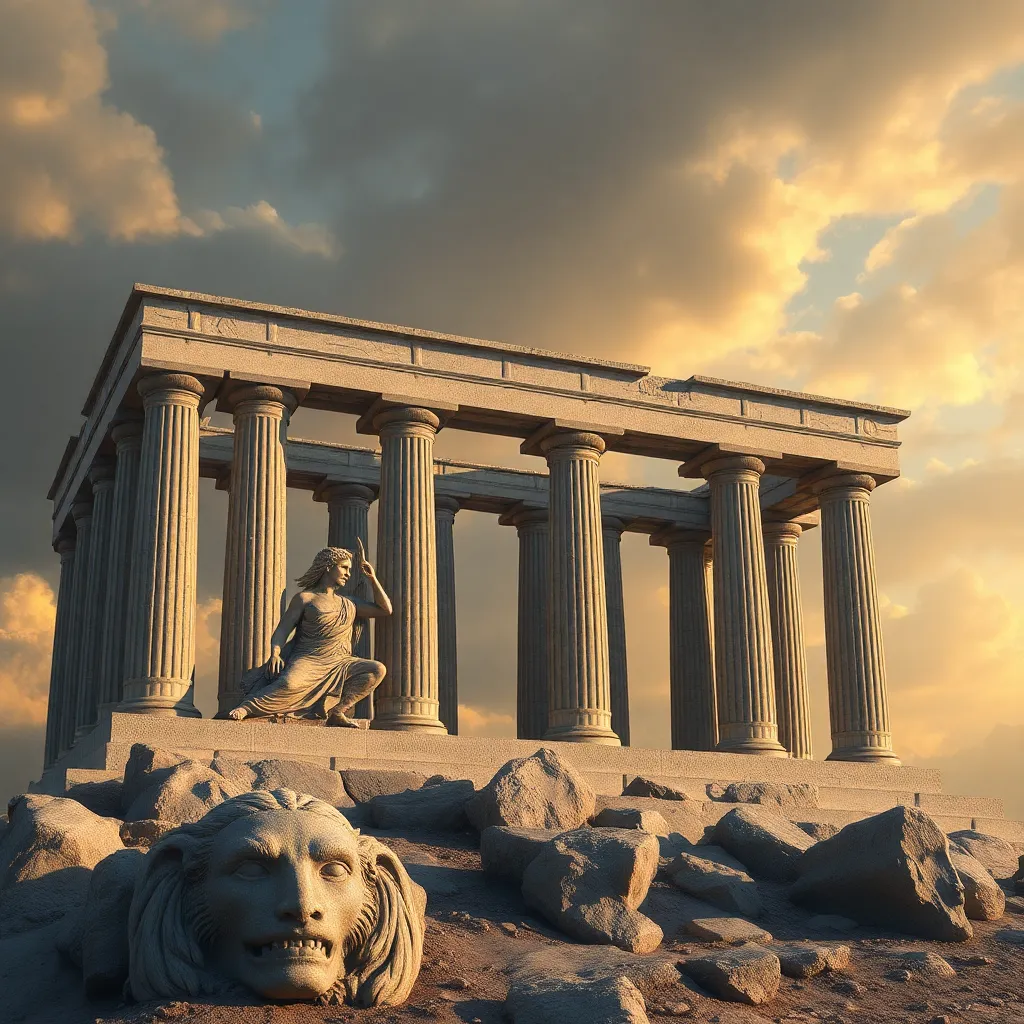The Iliad’s Influence on Modern Storytelling Techniques
I. Introduction
“The Iliad,” attributed to the ancient Greek poet Homer, is one of the cornerstone texts of Western literature. Composed in the 8th century BCE, this epic poem narrates the events of the Trojan War, focusing particularly on the wrath of Achilles and the consequences of his anger on the Greek forces. The historical context of “The Iliad” not only reflects the values and beliefs of ancient Greek society but also serves as a timeless exploration of human emotion and conflict.
The importance of “The Iliad” in the canon of Western literature cannot be overstated. It has shaped narrative forms, character archetypes, and thematic explorations throughout centuries of storytelling. This article aims to explore the profound influence of “The Iliad” on modern storytelling techniques, illustrating how this ancient epic continues to resonate in contemporary literature, film, and other forms of media.
II. Narrative Structure and Epic Form
“The Iliad” is celebrated for its epic narrative structure, weaving together various stories and perspectives to create a rich tapestry of human experience. One notable aspect is its use of non-linear storytelling. Rather than presenting events in a chronological order, Homer employs flashbacks, foreshadowing, and shifts in perspective to enhance the narrative’s depth.
In contemporary storytelling, especially in film and literature, non-linear narratives have become a popular technique. Works such as:
- “Pulp Fiction” by Quentin Tarantino
- “The Sound and the Fury” by William Faulkner
- “Memento” by Christopher Nolan
exemplify how non-linear storytelling can create intrigue and complexity, drawing inspiration from the narrative techniques found in “The Iliad.”
III. Character Development and Archetypes
The characters in “The Iliad” are multifaceted and embody various archetypes that resonate with audiences even today. Key figures such as Achilles, Hector, and Agamemnon are not merely warriors; they represent ideals of honor, duty, and mortality.
Achilles, often seen as the quintessential tragic hero, embodies the struggle between personal desire and societal expectations. Hector, as the noble defender of Troy, represents honor and familial devotion. These characters have influenced modern character development, leading to the creation of archetypes like:
- The Tragic Hero
- The Noble Warrior
- The Anti-Hero
Such archetypes continue to shape modern storytelling, offering relatable and compelling characters that drive narratives forward.
IV. Themes of Honor, Glory, and Mortality
Central to “The Iliad” are themes of honor, glory, and mortality, which explore the human condition in profound ways. The pursuit of glory on the battlefield often leads to tragic consequences, as seen in Achilles’ journey and Hector’s fate. These themes resonate in contemporary literature and film, often serving as the driving force behind character motivations and plot developments.
Modern narratives frequently grapple with similar themes, including:
- The cost of ambition
- The quest for identity
- The inevitability of death
By examining these themes, modern storytellers can create narratives that reflect the complexities of human experience, much like Homer did in “The Iliad.”
V. Use of Dialogue and Rhetoric
The dialogue in “The Iliad” is not only functional but also rich with rhetorical devices that enhance its dramatic impact. The characters engage in speeches that reveal their motivations, emotions, and conflicts, often employing metaphors, similes, and epithets to convey their messages.
This emphasis on dialogue has influenced modern writing and screenwriting techniques. Contemporary works often prioritize sharp, impactful dialogue to develop characters and advance the plot. Films like:
- “The Social Network”
- “Pulp Fiction”
- “Pride and Prejudice” (2005)
demonstrate how effective dialogue can create tension and deepen character relationships, echoing the techniques found in “The Iliad.”
VI. The Role of Fate and Free Will
One of the most compelling philosophical dilemmas in “The Iliad” is the tension between fate and free will. Characters often grapple with their destinies, reflecting the belief in the gods’ control over human lives while also exhibiting their personal agency.
This exploration of fate versus free will continues to resonate in modern storytelling, prompting audiences to consider their own lives and choices. Films such as:
- “The Matrix”
- “Inception”
- “A Beautiful Mind”
explore similar themes, challenging characters and viewers alike to ponder the extent of their control over their lives.
VII. Visual Storytelling and Adaptations
The impact of “The Iliad” extends beyond literature to visual storytelling, with numerous adaptations in film and theater. From classic films like “Troy” to modern animated versions, the epic’s narrative has inspired a variety of visual interpretations.
Techniques such as:
- Symbolic imagery
- Dynamic battle sequences
- Character-driven visuals
have been influenced by Homer’s vivid descriptions, contributing to the richness of modern CGI and animation. The epic’s scenes of valor and tragedy continue to be a source of inspiration for filmmakers and animators worldwide.
VIII. Conclusion
In conclusion, “The Iliad” has left an indelible mark on modern storytelling techniques. From its innovative narrative structure and character archetypes to its exploration of timeless themes and impactful dialogue, the epic continues to inspire contemporary writers and filmmakers. The enduring legacy of ancient narratives serves as a reminder of the universal nature of human experience, reflecting the complexities of honor, glory, and mortality.
As we continue to engage with classical literature, we find that the echoes of “The Iliad” resonate with modern audiences, affirming its relevance and significance in the ever-evolving landscape of storytelling.




